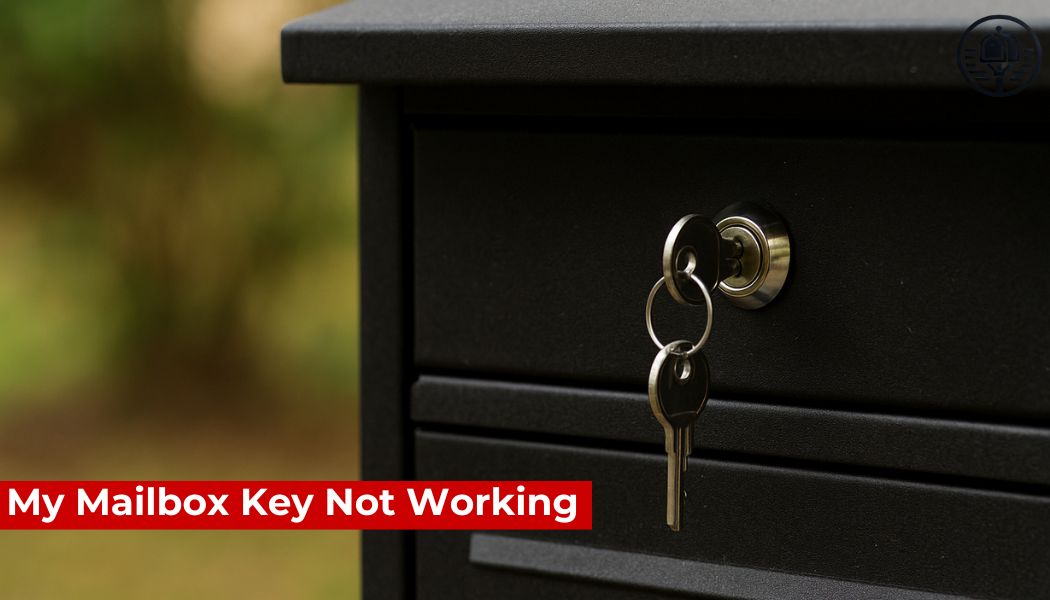Few things are more frustrating than realizing your mailbox key is not working. Whether it’s stuck, won’t turn, or doesn’t fit, a faulty mailbox lock can prevent you from accessing important letters and packages. Since your mailbox is essential for communication, bills, and deliveries, knowing how to handle this problem quickly is crucial.
In this guide, we’ll explore the common reasons mailbox keys fail, how to troubleshoot issues, and when it’s time to replace your mailbox lock with a more secure solution.
Why Is My Mailbox Key Not Working?
If you’re wondering, “Why is my mailbox key not turning?”, the issue usually comes down to one of these causes:
-
Worn out key – Keys can become bent, worn, or damaged after years of use.
-
Damaged lock cylinder – The internal mechanism may be rusted, jammed, or broken.
-
Weather conditions – Moisture and dirt can cause the lock to seize up.
-
Wrong key – In buildings with multiple mailboxes, keys sometimes get mixed up.
-
Forced entry attempt – If someone tried to tamper with your mailbox, the lock may no longer function correctly.
Identifying the root cause is the first step to solving the problem.
Quick Fixes Before Replacing the Lock
Before replacing your mailbox lock, try these simple solutions:
Clean and Lubricate the Lock
Dust and rust can make a lock difficult to use. Spray a graphite-based lubricant or dry Teflon spray into the lock cylinder, then gently insert the key and turn it. Avoid using oil-based products like WD-40, as they attract dirt and may worsen the problem.
Check the Key
Inspect your key for bends, cracks, or excessive wear. If you have a spare, try using it instead. Sometimes, cutting a new copy from the original key can solve the issue.
Straighten or Replace Bent Keys
If the key is slightly bent, carefully straighten it using pliers. For badly damaged keys, replace them before assuming the lock is broken.
Gently Turn the Key
If the lock feels stuck, avoid forcing it. Apply steady, gentle pressure to avoid breaking the key inside the lock.
When to Replace the Mailbox Lock
If cleaning, lubricating, and key replacement don’t work, it’s time to change the mailbox lock. Replacement is necessary if:
-
The lock cylinder is damaged or corroded.
-
The key no longer fits or turns.
-
You’ve lost all copies of the mailbox key.
-
You’ve moved into a new home and want better security.
-
Your mailbox was tampered with or broken into.
Fortunately, replacing a mailbox lock is a simple and affordable solution.
You can explore secure replacements here: Mailbox Lock Collection
How to Replace a Mailbox Lock
Step 1: Get the Right Lock
Purchase a replacement mailbox lock that fits your mailbox type (wall-mounted, curbside, or community mailbox).
Step 2: Remove the Old Lock
Most mailbox locks are secured with a retaining clip. Use pliers or a screwdriver to remove the clip, then pull out the old lock.
Step 3: Install the New Lock
Insert the new lock into the hole, secure it with the retaining clip, and test the new keys provided.
Step 4: Test Security
Make sure the lock opens smoothly and securely before closing your mailbox.
Choosing the Right Mailbox Lock
When buying a new lock, consider:
-
Material – Rust-resistant steel or zinc locks last longer.
-
Security level – Locking mechanisms with anti-pick features provide better protection.
-
Compatibility – Ensure the lock matches your mailbox type and size.
-
Ease of installation – Many locks are designed for quick DIY replacement.
A wide selection of durable options is available here: Shop Mailbox Locks
Benefits of Replacing an Old Mailbox Lock
Replacing your lock does more than just fix the problem. Benefits include:
-
Improved security – Protects against theft and tampering.
-
Peace of mind – You’ll know that only you have access to your mail.
-
Convenience – No more struggling with a key that doesn’t turn.
-
Compliance – In apartments or condos, management may require secure, functioning mailbox locks.
Preventing Future Mailbox Key Problems
To avoid facing the same issue again, follow these maintenance tips:
-
Lubricate your mailbox lock every 6–12 months.
-
Keep spare keys in a safe place.
-
Replace worn or bent keys immediately.
-
Avoid slamming the mailbox door shut, as this can misalign the lock.
-
Upgrade to a no-key combination lock if you want a modern, hassle-free solution.
Conclusion
If your mailbox key is not working, don’t panic. Start with simple fixes like cleaning, lubricating, or checking the key itself. If those fail, replacing the lock is the best long-term solution. Not only will this restore access to your mailbox, but it will also improve security and convenience.
With the right tools and a high-quality mailbox lock, you can solve the issue quickly and prevent future problems.
FAQ
Q: Why won’t my mailbox key turn in the lock?
A: It could be due to dirt, rust, or a worn-out key. Try cleaning and lubricating the lock before replacing it.
Q: Can I replace my own mailbox lock?
A: Yes. Most locks are easy to replace with basic tools, though some community mailboxes may require permission from property management or USPS.
Q: How much does a new mailbox lock cost?
A: Basic replacement locks typically cost $10–$40, depending on material and security features.
Q: What if my key breaks inside the lock?
A: Use needle-nose pliers to remove the broken piece. If that doesn’t work, you’ll need to replace the lock.
Q: Can I upgrade to a lock without a key?
A: Absolutely. Many homeowners now choose combination mailbox locks for convenience and added security.

